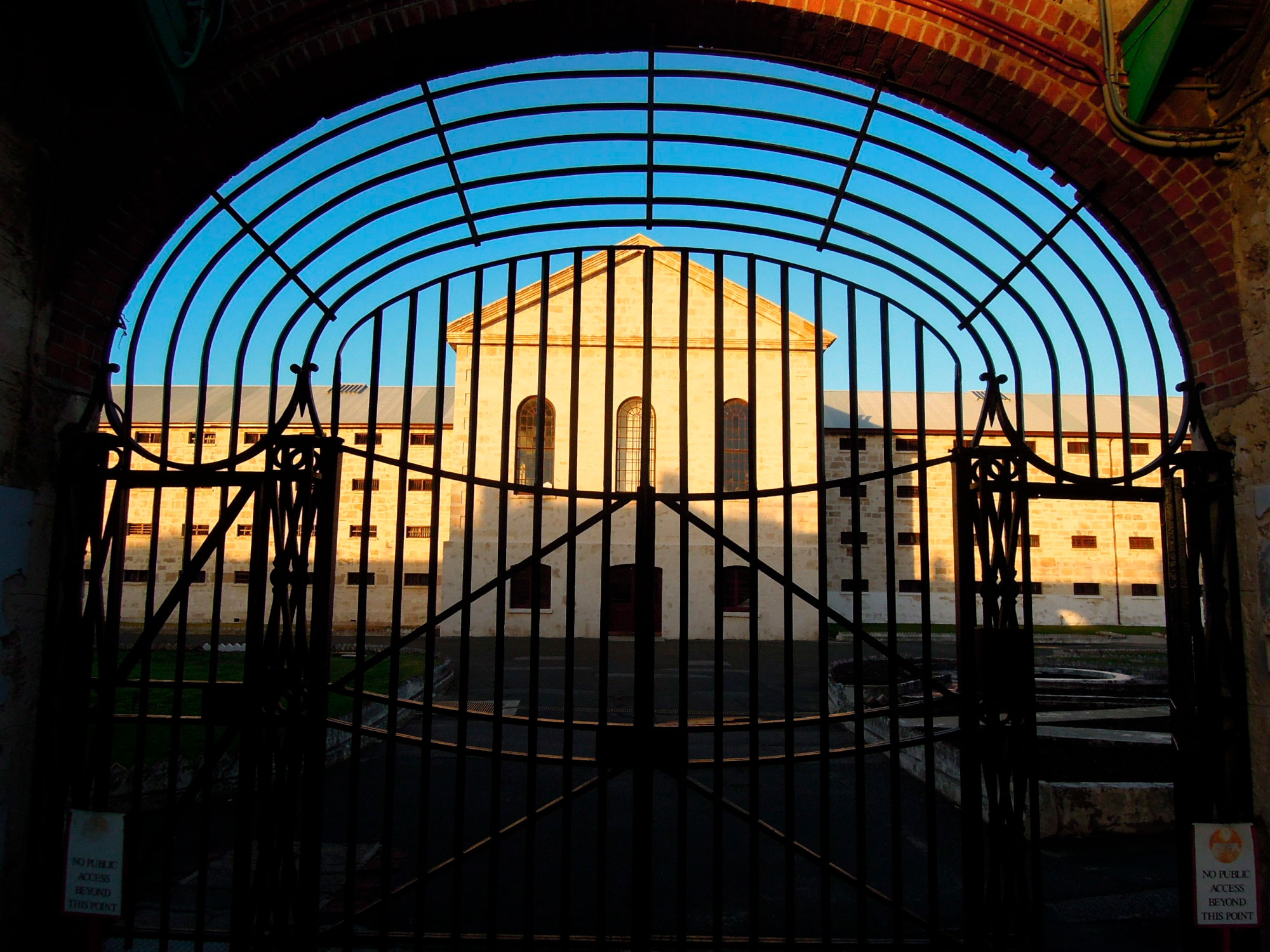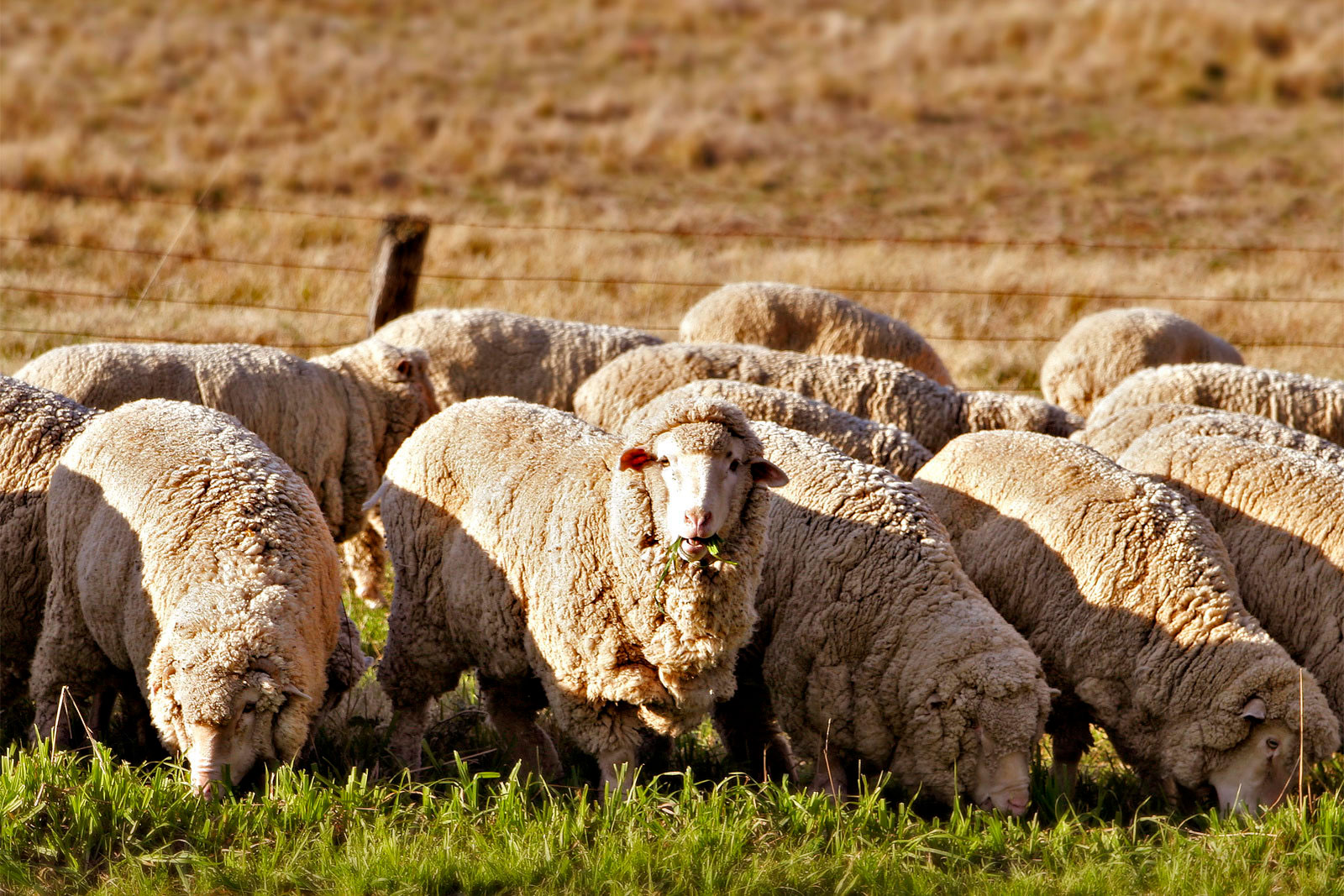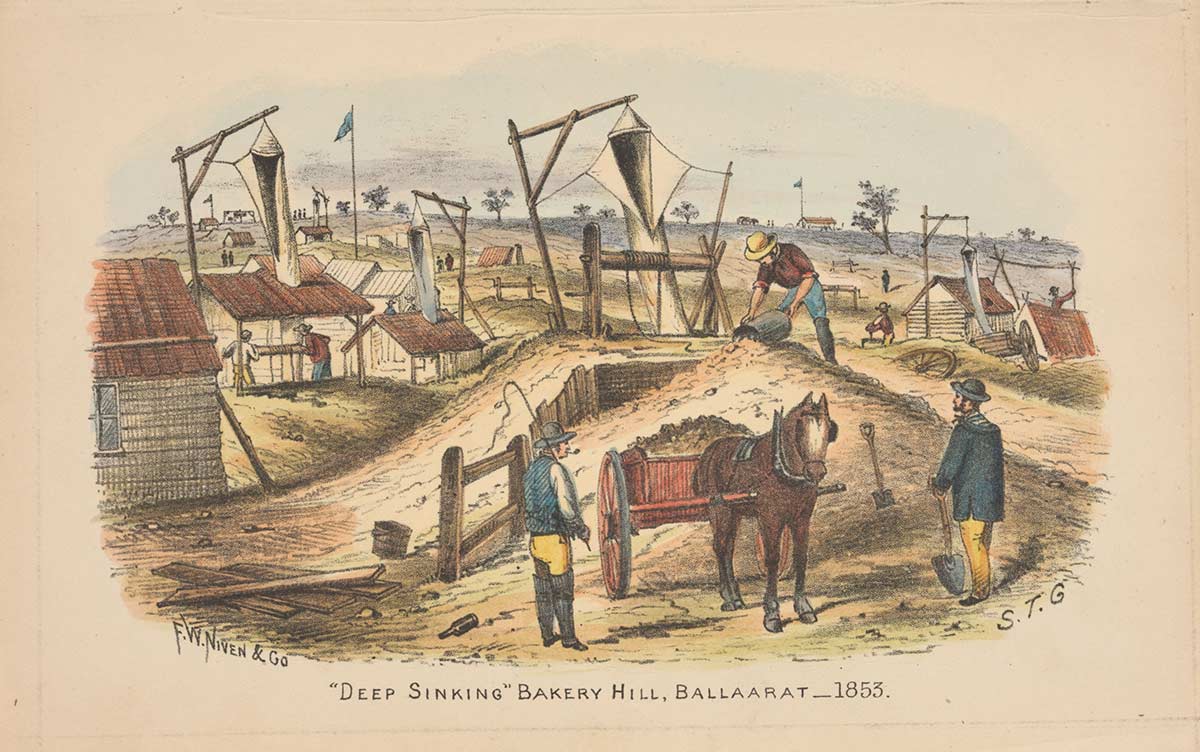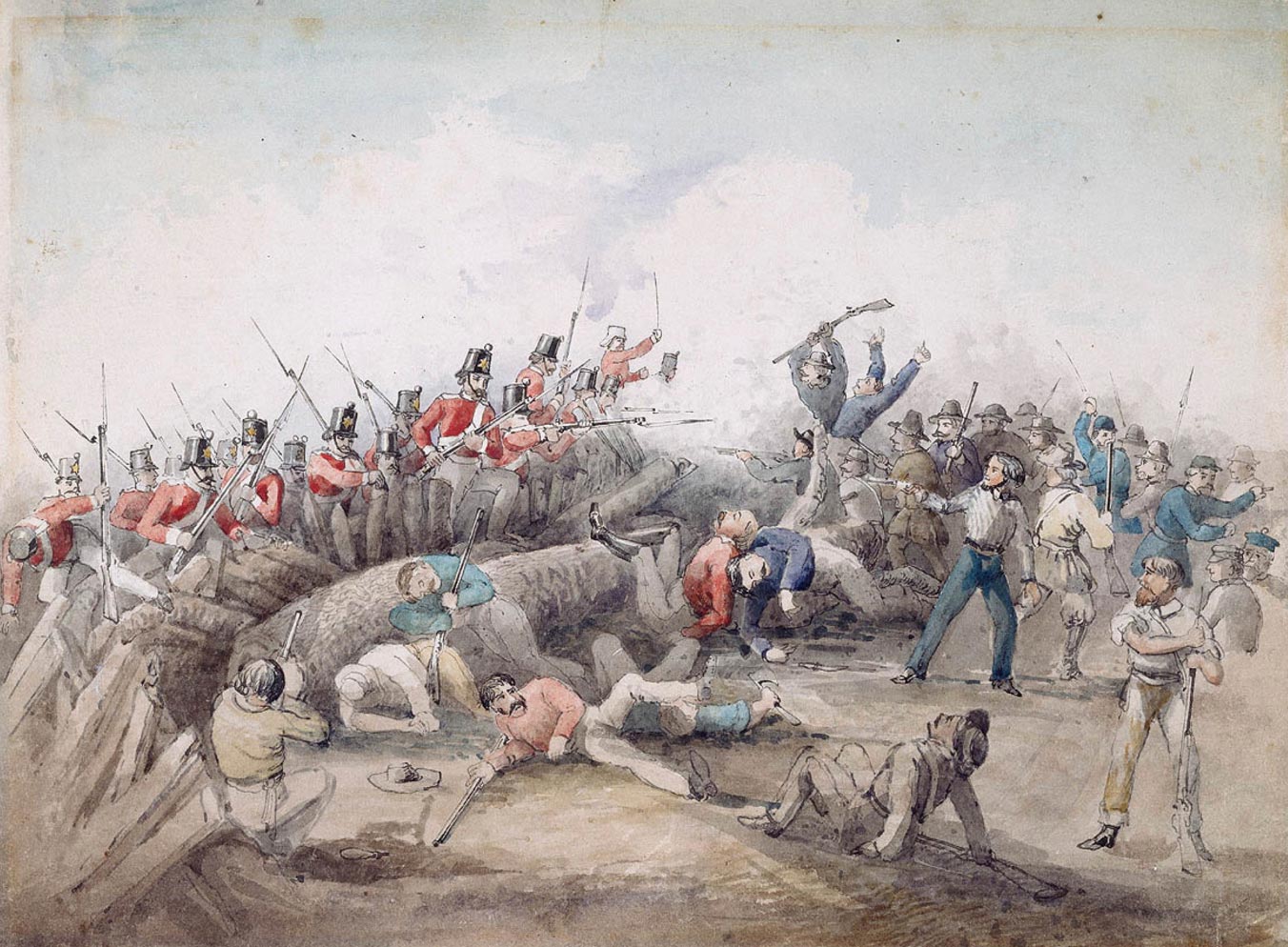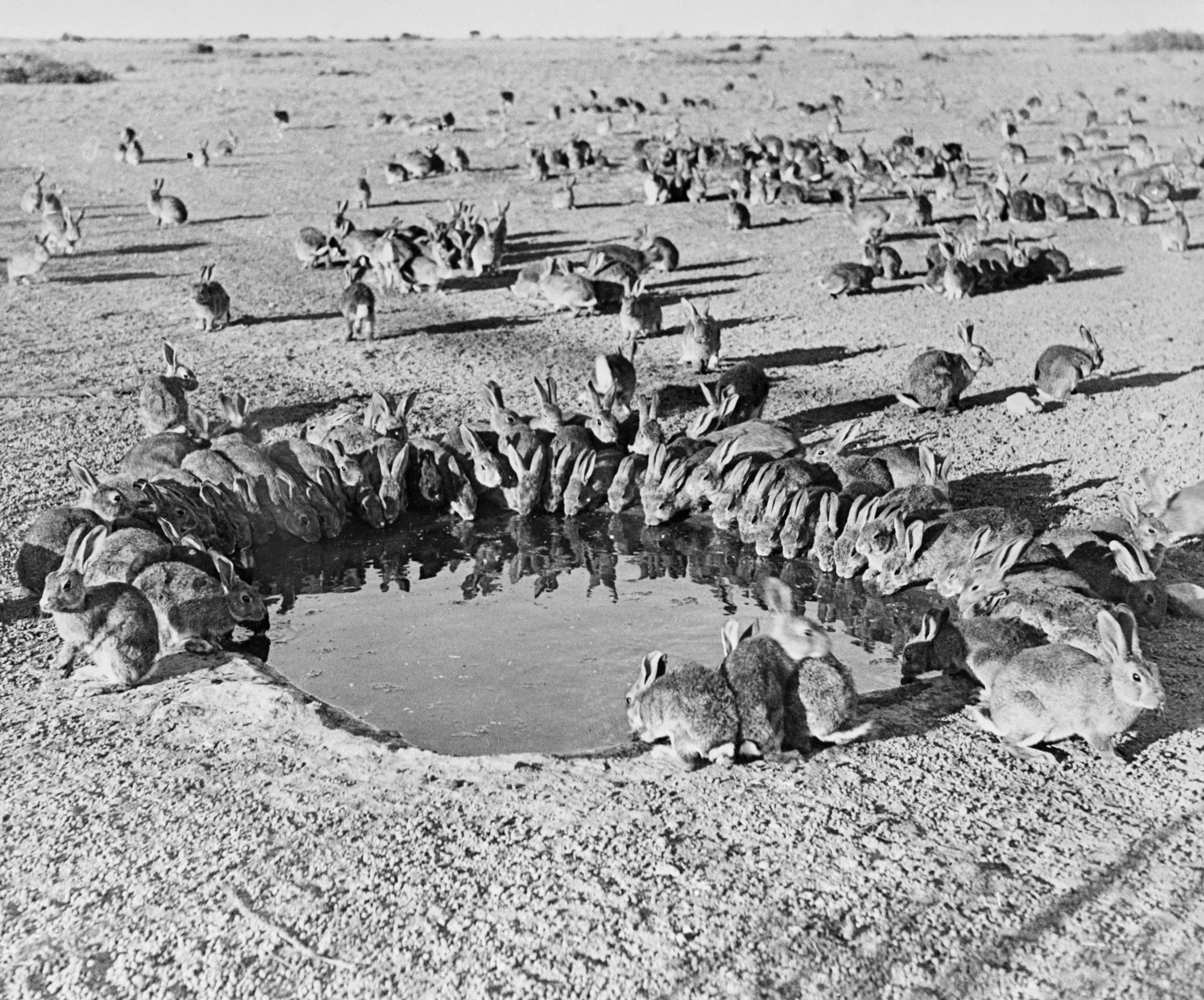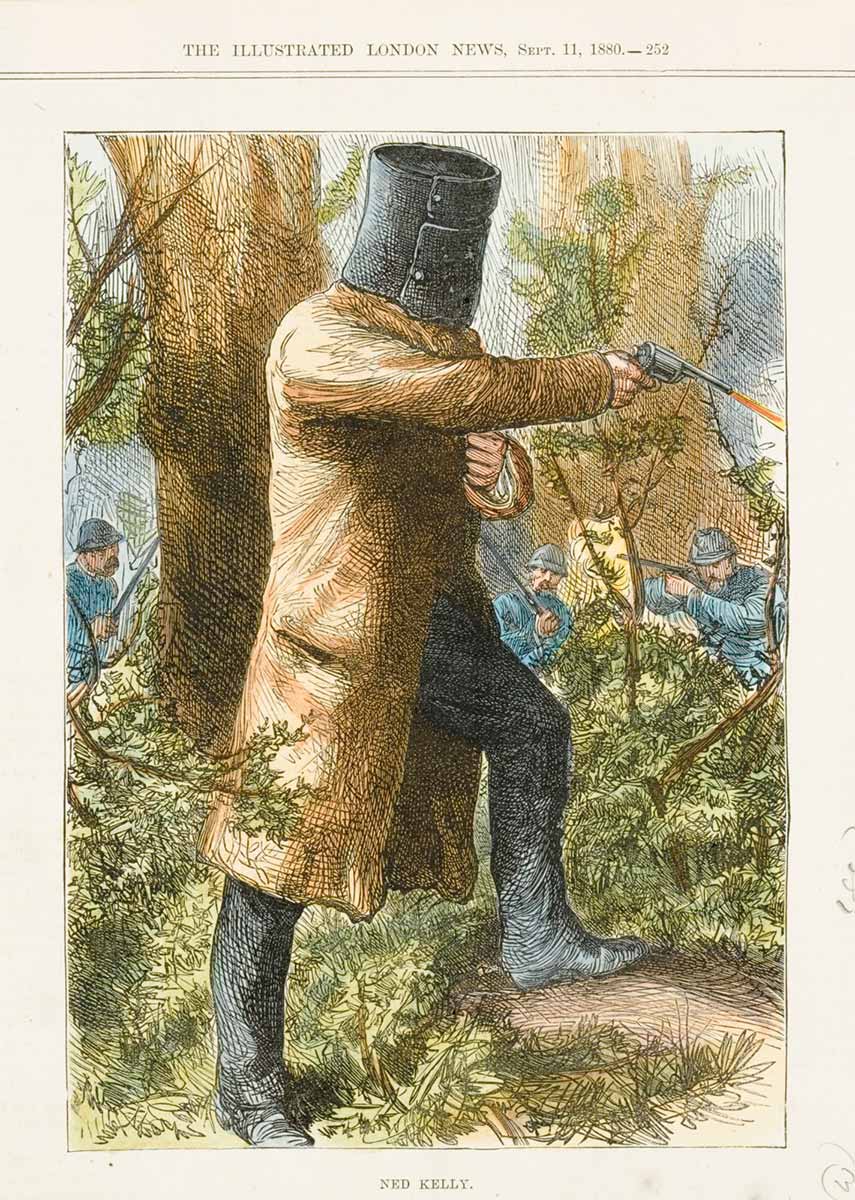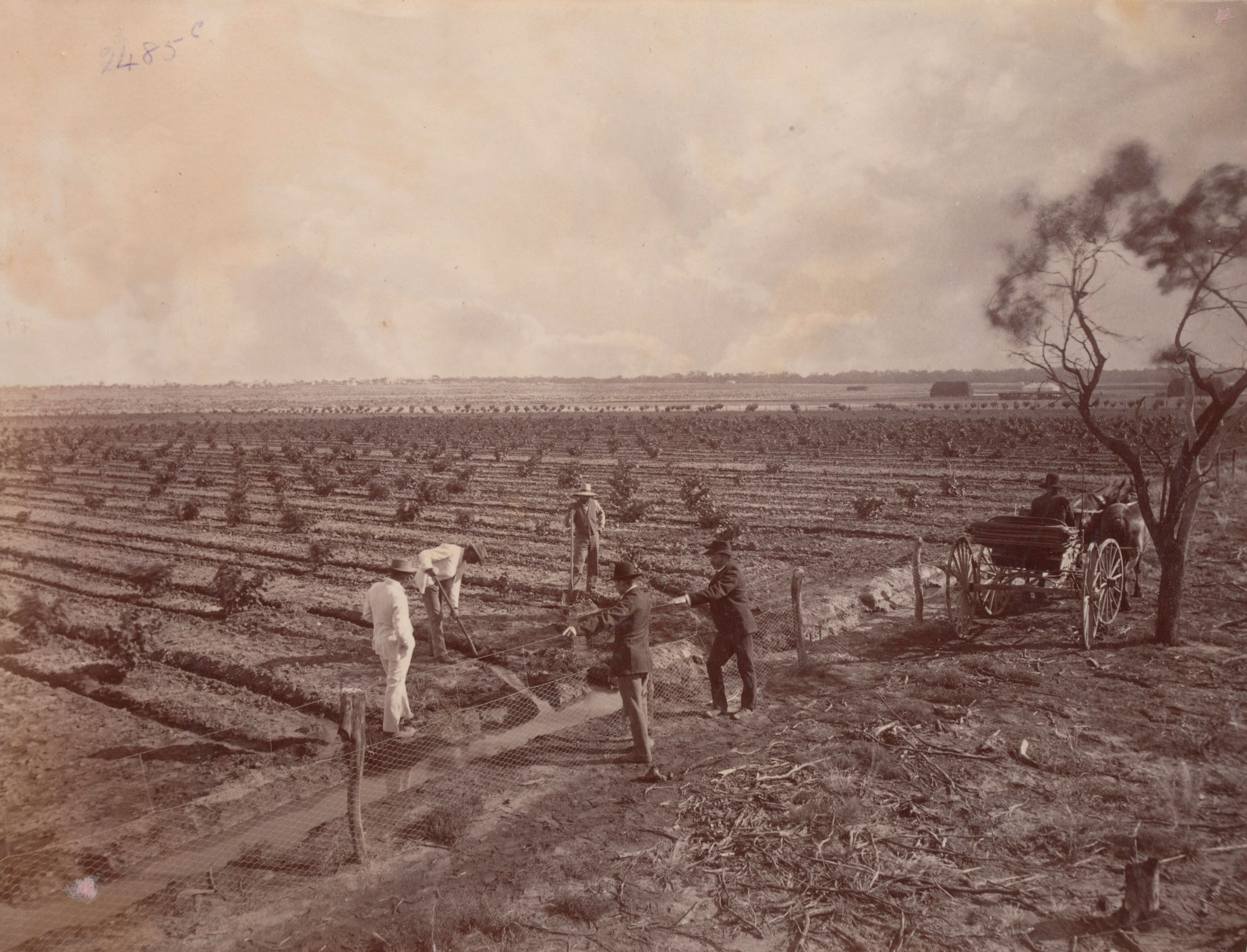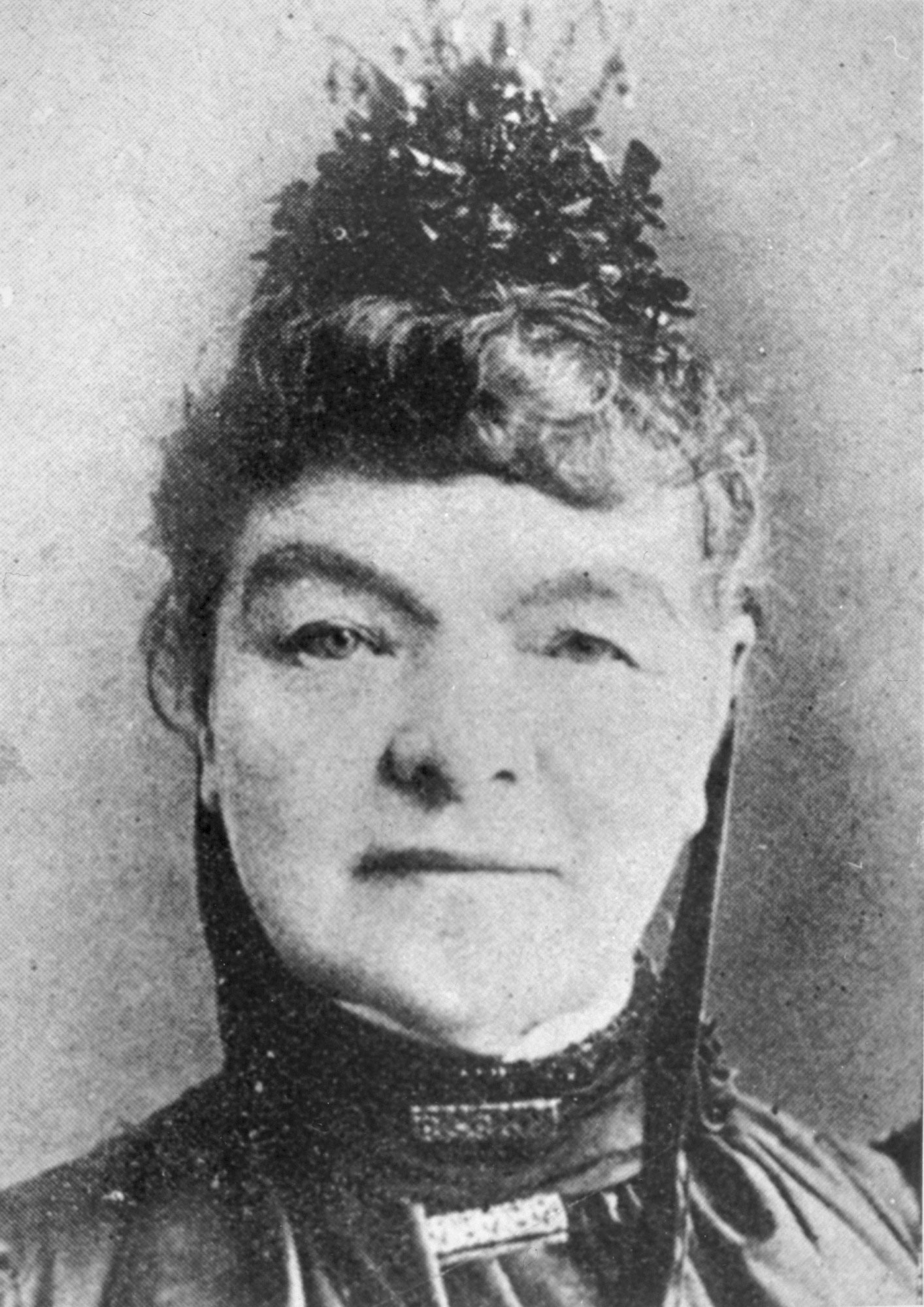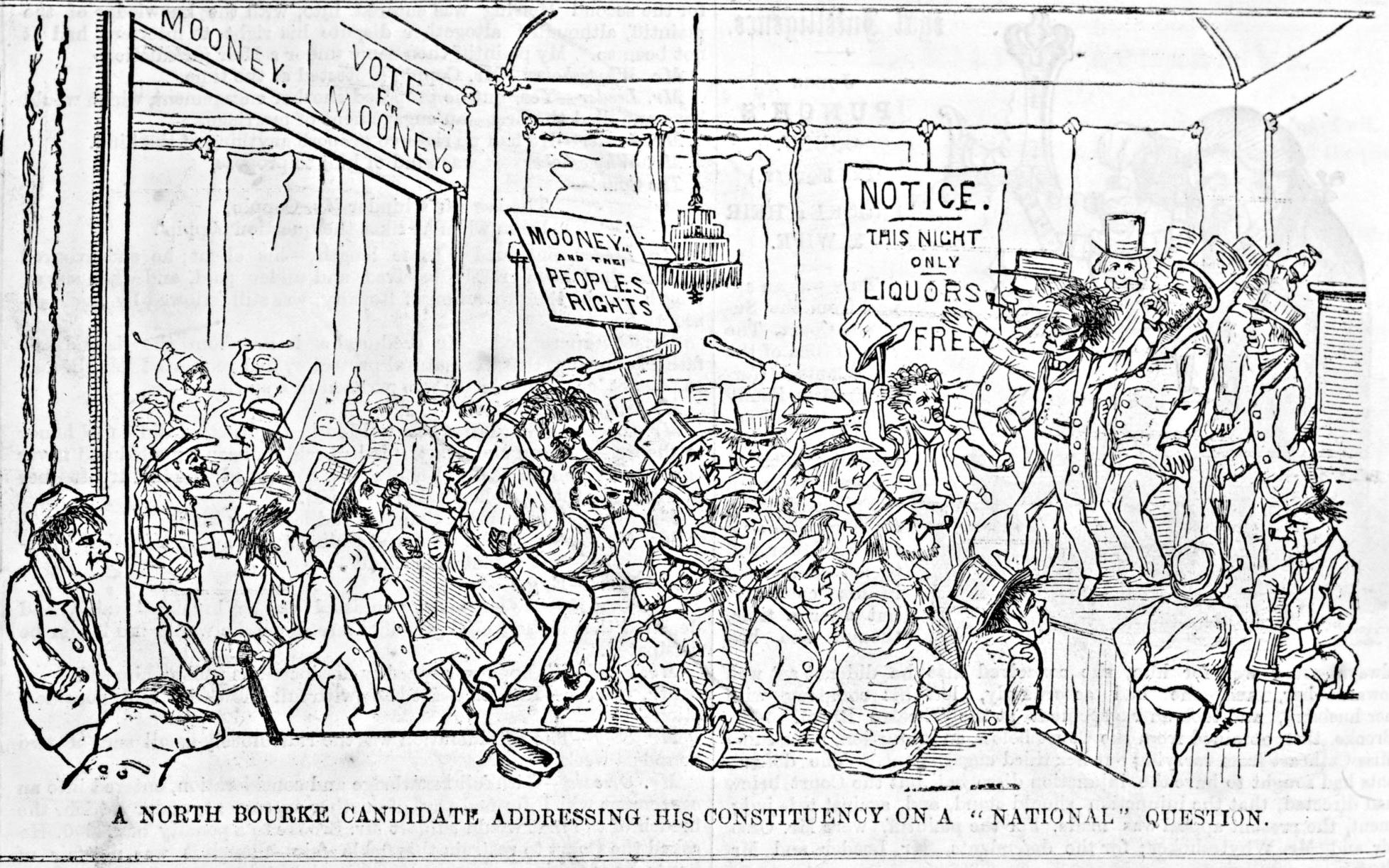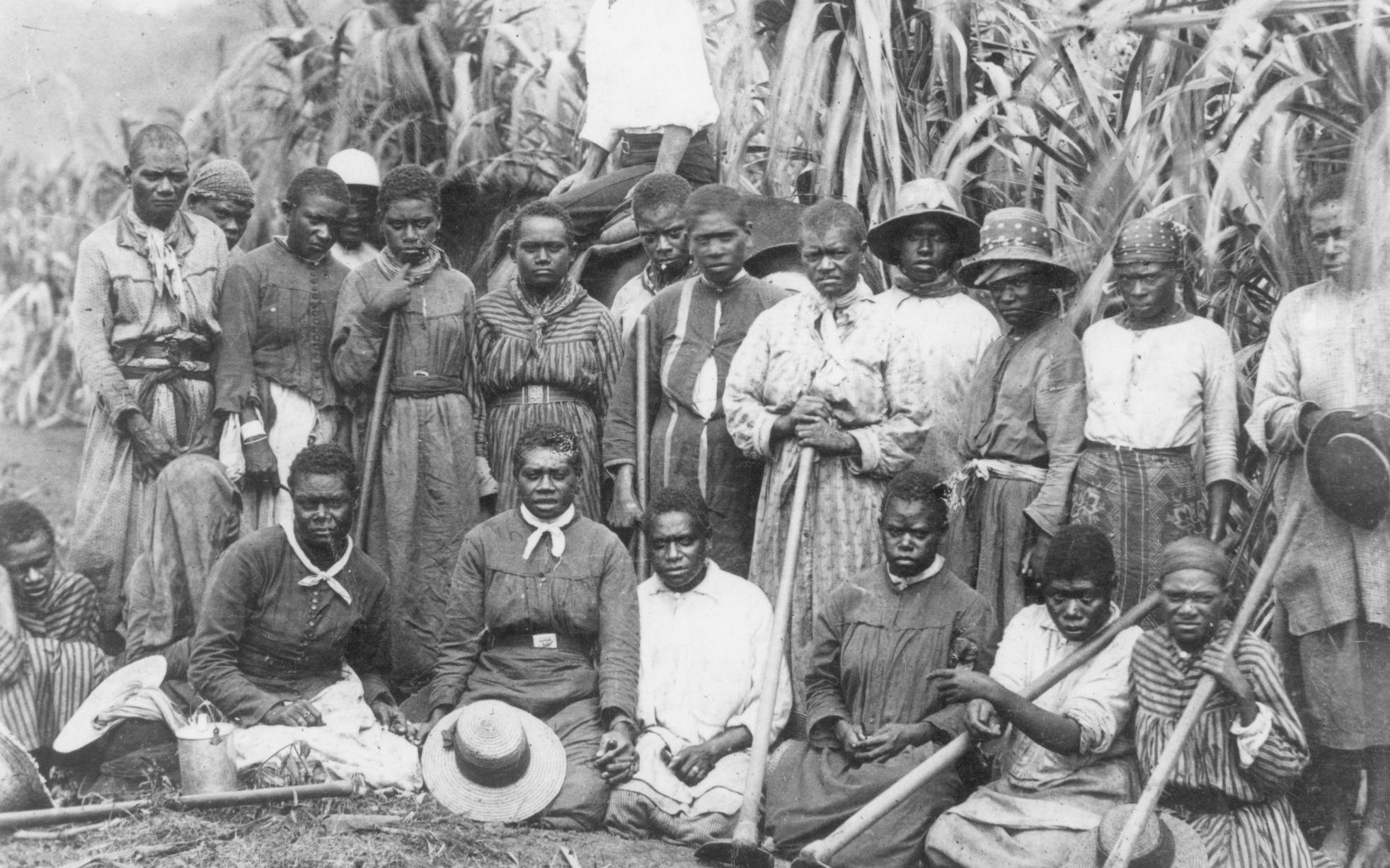Learning module:
Colonial Australia Defining Moments, 1788–1900
Investigation 1: What made us who we are today? Significant events in Australian history in the 1800s
1.8 Rabbits released: ‘A carpet of grey on the land’
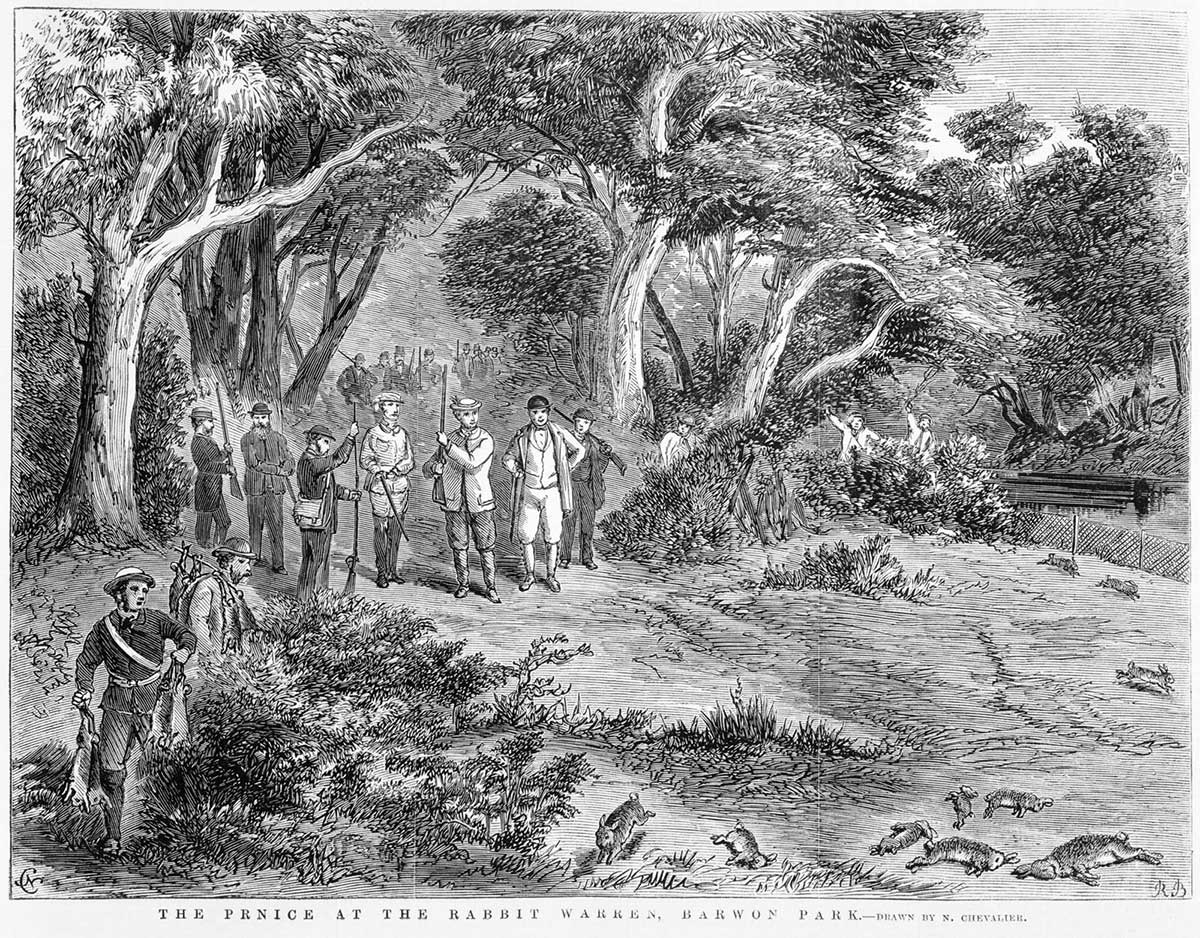
Imagine that…
You are in a new country.
You have some animals with you from the old country you came from
These animals do not exist naturally in the new country.
You think that you would like to see these animals set free in the new country. They will be a source of food for some people, they can be hunted for sport, and they will remind you of home.
On the other hand, their numbers might get out of control, and damage the environment.
-
Do you set the animals free or not?
Discuss this question, then see how something like this really did happen in Australia.
Your task is to go through each evidence file and answer the questions.
|
First release |
Rabbits on the march |
Trying to stop the rabbits |
|
Rabbitohs |
Today |
Using photographs to tell a story |
Evidence file A
First release
On Christmas day 1859, Thomas Austin released 13 European wild rabbits on his estate, Winchelsea, Barwon Park, Victoria. They had been specially collected and sent to him by a relative in England. He set them free so that he could hunt them.
The rabbits had abundant food sources, good places to make or burrows and a lack of predators, so they bred very quickly. By 1866 hunters had killed 14,000 rabbits on the Barwon Park estate, all of them descendants of those first 13 rabbits released a few years earlier.
1. Check your understanding of this evidence by selecting true or false for these statements.
Evidence file B
Rabbits on the march
By 1880, rabbits had crossed the Murray River to New South Wales and by 1886 they had reached Queensland. By 1894, they had crossed the Nullarbor and reached Western Australia.
When there were large numbers, the rabbits would eat all the grass and shrubs, and destroy native vegetation. The native animals that needed the natural vegetation would die out. This also caused soil erosion, and destroyed water sources.
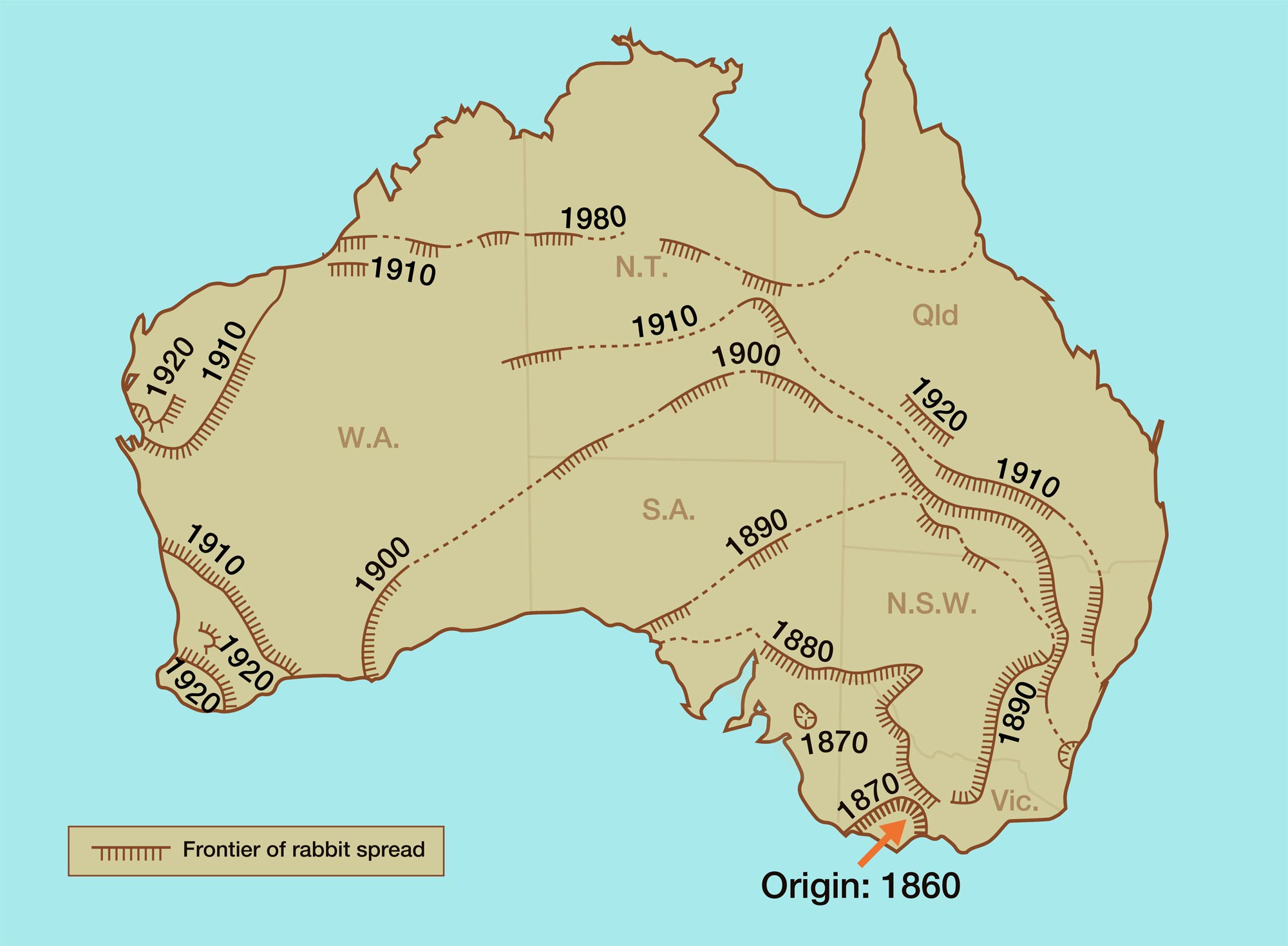
2. According to the map, roughly when did rabbits reach:
Evidence file C
Trying to stop the rabbits
Farmers tried many ways to control the spread of rabbits, including trapping, ripping out the warrens, poisoning and hunting.
They also tried fencing. By 1890 there were about 320,000 kilometres of rabbit-proof fence on farms across Australia. The most famous of these was the rabbit-proof fence built between 1901 and 1907 that extended 3256 kilometres north to south across Western Australia.
However, that fence was unsuccessful: it was completed after the rabbits had already crossed into the state, and constant damage to the fence meant there was almost always somewhere the rabbits could cross.
3. Check your understanding of this evidence by completing these statements.
Evidence file D
Rabbitohs
During the terrible Depression of the 1930s when thousands of people were out of work, many people shot or trapped rabbits for food, or even became ‘rabbitohs’ — selling rabbits from door to door.
Evidence file E
Today
Most recently, people have used diseases to wipe out rabbits. In the 1950s the disease myxomatosis worked, but some rabbits developed immunity to it and numbers rose again. The same thing happened in the 1990s with the introduction of the calicivirus.
Rabbits are one of Australia’s most visible introduced species. Australia’s native plants and animals adapted to life on an isolated continent over millions of years, but since European colonisation they have had to compete with a range of new animals for habitat, food and shelter. These introduced species have had a major impact on our country’s soil and waterways and on native plant and animal diversity.
Evidence file F
Using photographs to tell a story
Here are four photographs about rabbits in Australia. They are not in any order. What does each picture show?
4. The four photographs can tell a story about rabbits in Australia. Match the four labels to the pictures to put them in order and make a story.
You can find out more by watching this 1949 newsreel clip about rabbits from the National Film and Sound Archive.
Conclusion
5. Think about everything you have learned in this investigation. (a) What happened? (b) When? (c) Where? (d) Why?
6. Do you think the introduction of rabbits is important in Australian history? Why?
7. The National Museum of Australia has many objects on display. These objects are linked to stories of people, places, events or ideas, and help us understand more about those stories.
Suggest three possible objects relating to introduced species in Australia that could be in a museum.
8. If you could choose an object to put on display in the National Museum of Australia about the rabbit in Australia, what would it be? Make a choice, and write a short caption for it.
Finding out more
To find out more go to 1859 ‘They all ran wild’ — Rabbits introduced
You can also read more in: Robert Lewis in association with the National Museum of Australia, The Story of Australia, Random House Australia, North Sydney, 2017, chapter 4.
Images used in question 4:
Lorry load of rabbits, Braidwood, NSW, photographed by Paul C. Nomchong. National Museum of Australia
The Duke of Edinburgh shooting rabbits in Barwon Park, Victoria, in 1867, N Chevalier, engraving. National Museum of Australia
Rabbit proof fence divides pasture, Victoria, 1963. National Archives of Australia A1200, L44185
Rabbits around a waterhole during myxomatosis trials at Wardang Island, South Australia. National Archives of Australia A1200, L44186







